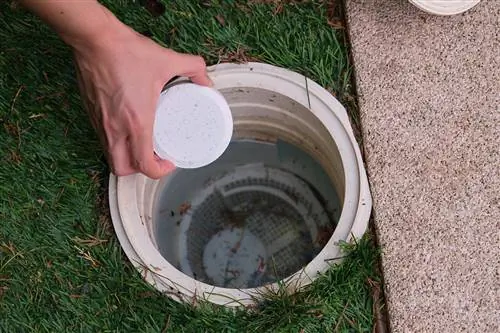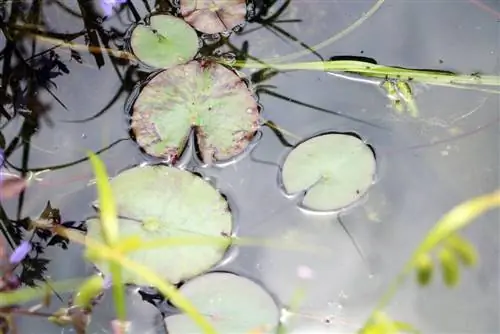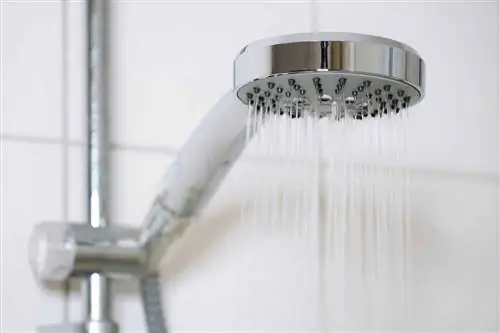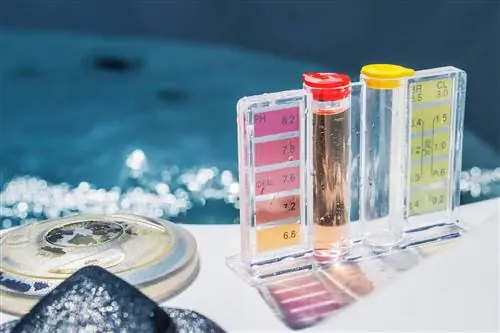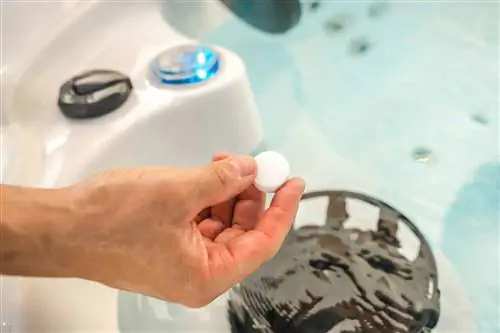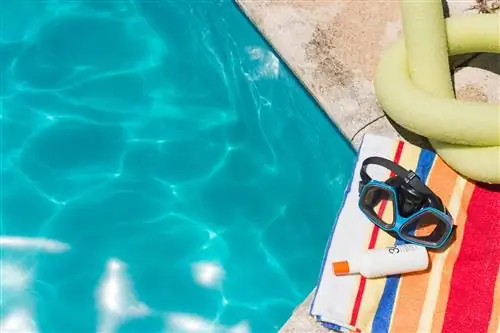- Author admin [email protected].
- Public 2023-12-17 03:39.
- Last modified 2025-06-01 06:48.
Chlorine can keep the pool water clear or, as shock chlorination, remove cloudiness and green discoloration. The question always arises as to what the correct dosage and optimal values look like. This guide provides comprehensive answers.
Function
Chlorine acts as a disinfectant in the pool, killing germs and pathogens. This reduces the risk of illness and inflammation. A filter alone is not enough because it cannot safely remove all particles.
Chlorine is therefore part of regular and ongoing pool maintenance. However, it can only develop its effect if the ideal chlorine value is reached.
Testing pool water
A quick and easy way to determine the chlorine value is to use test strips. These are simply held directly into the water for a short time to determine the value.
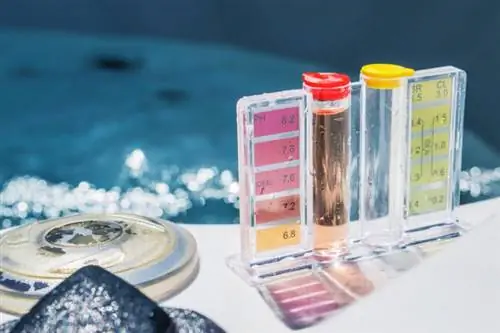
This is important, on the one hand, in order to be able to adjust the amount of the agent accordingly and, on the other hand, to avoid dangers caused by too high a content.
Tip:
The chlorine value varies greatly depending on various factors and in a very short time. The test should be done regularly and at short intervals to find the right dosage and maintain safety.
Chlorine concentration
The question of how much chlorine should be added to 1,000 liters of water cannot be answered in general terms. But there is an ideal chlorine concentration. This is the “free chlorine” content. This has not yet been used up and can therefore still have a disinfecting effect.
- Minimum content: 0.3 to 0.5 mg per liter
- Optimal value: 0.5 to 1.0 mg per liter
- Maximum value: from 1.5 mg per liter
If the chlorine concentration is less than 0.5 milligrams per liter, the water threatens to become cloudy, turn green or even completely overturn. The effort required for cleaning is then increased. There is also a risk of infection. Often only a combination of shock chlorination and comprehensive cleaning can provide relief.
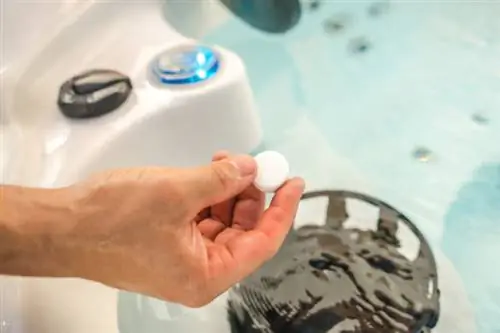
Concentrations of up to one milligram are optimal for bathing. If the value is significantly higher, there are various dangers.
Dangers of overchlorination
The pool should not be used immediately after shock chlorination or if the concentration is accidentally too high, as this poses he alth risks. These are:
- Difficulty breathing
- Rash
- Nausea
- burning, irritated eyes
- Skin Irritation
- Coughing up to bloody sputum
- Vertigo
- chemical burns
Especially children and sensitive people or people with existing respiratory diseases can quickly find themselves in dangerous situations due to chlorine poisoning. It is therefore all the more important to dose carefully on the one hand and to test on the other. There are often clear warning signs even without test strips. These include a strong smell of chlorine and burning eyes.
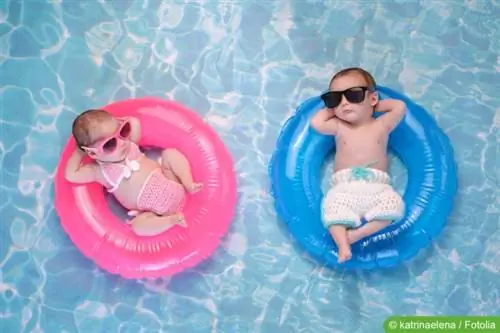
Tip:
The chlorine concentration drops quickly, especially in summer. In the event of over-chlorination, it is often enough to refrain from using the pool for a few days.
Dosage - factors
Various factors play a role in determining the correct dosage of chlorine per 1,000 liters of water. These include, among others:
- Occurrence of contamination
- Dosage form
- Intensity of use
- Concentration
- Temperature
- UV radiation
In midsummer, when you swim every day or when wind and thunderstorms also bring pollution such as dust into the pool, the chlorine is used up very quickly. The high temperature promotes the reproduction and spread of germs, which requires greater disinfection.
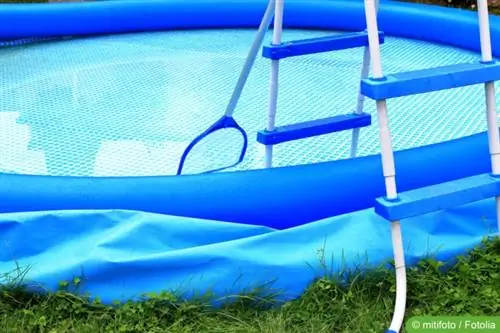
Basically, the manufacturer's information is crucial when dosing chlorine. These can vary greatly depending on the dosage form as granules, tablets or liquid as well as the concentration of the respective product.
Tip:
If, despite the correct dosage, it repeatedly turns out that the chlorine value in the pool is significantly too high or too low, the manufacturer's information can be adjusted accordingly. Regular testing should only be carried out once the chlorine has been able to distribute evenly in the pool.
Frequently asked questions
How often to test chlorine levels in the pool?
The chlorine level should be checked regularly using test strips once or twice a week. In addition, a check is recommended after shock chlorination or if severe cloudiness or other abnormalities occur again and again.
What is the maximum advisable chlorine level in the pool?
The optimal values are between 0.5 and 1.0 milligrams per liter of water. In very hot weather, strong sunlight and intensive use of the pool, the value can be increased to 1.2 milligrams of chlorine per liter. In this case, the disinfectant is used up quickly. If concentrations are too low, germs can spread and form deposits. For this reason, it still makes sense to chlorinate the water more frequently.
How can I reduce the amount of chlorine and prevent pollution?
The amount of chlorine can be reduced by choosing a filter with appropriate performance and UV light. Regular cleaning of the filter and pool as well as protection against contamination are also important. If possible and safe, covering it when not in use is recommended.
What happens if the chlorine level in the pool is too low?
Germs can spread almost unhindered. This leads to, among other things, slimy, streaky deposits on the floor and on the pool walls. The water becomes cloudy or green and may have an unpleasant odor. It also poses a risk of infections and inflammation.

